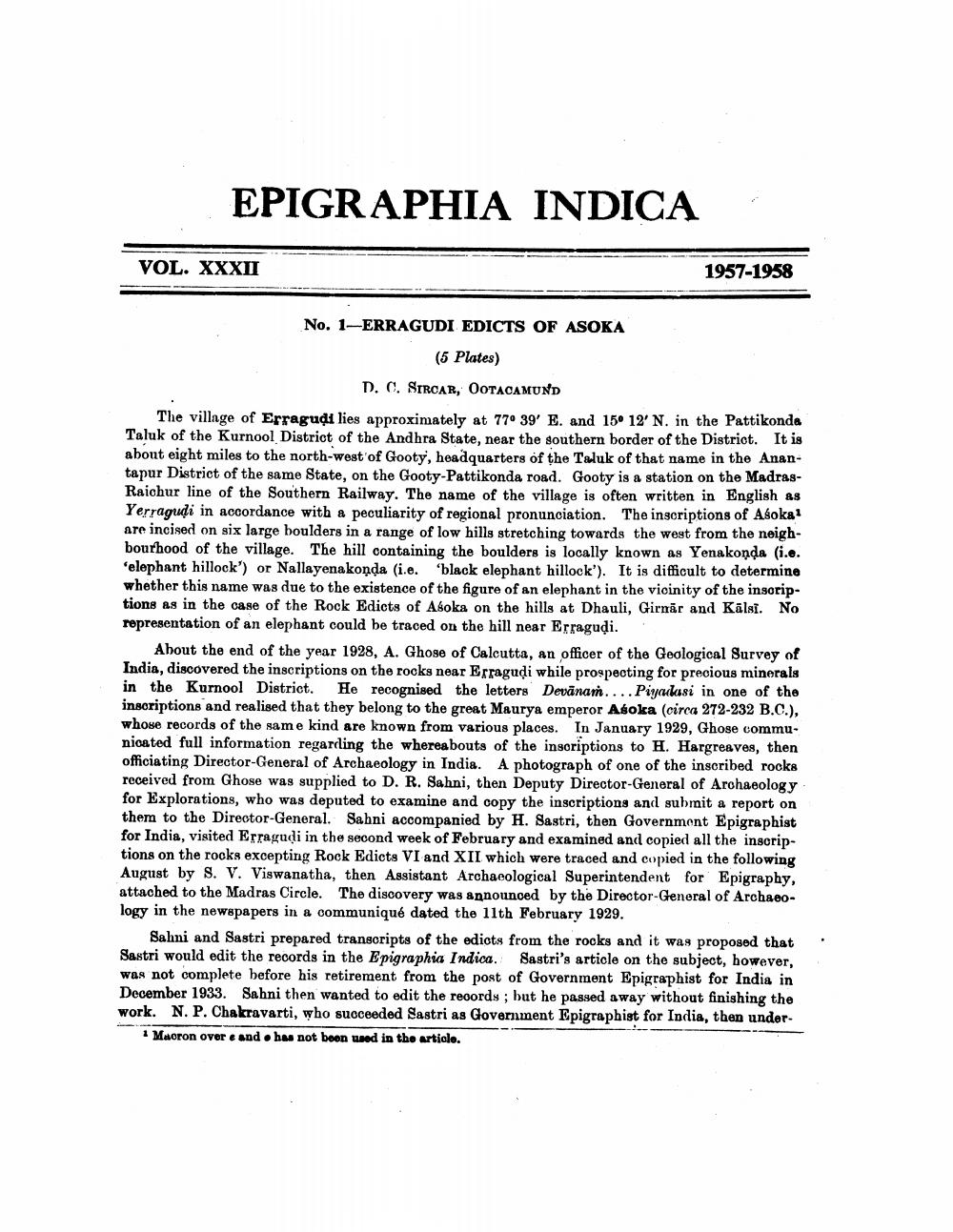________________
EPIGRAPHIA INDICA
VOL. XXXII
1957-1958
No. 1-ERRAGUDI EDICTS OF ASOKA
(5 Plates)
D. C. STRCAR, OOTACAMUND The village of Erragudi lies approximately at 77° 39' E. and 15° 12' N. in the Pattikonda Taluk of the Kurnool District of the Andhra State, near the southern border of the District. It is about eight miles to the north-west of Gooty, headquarters of the Taluk of that name in the Anantapur District of the same State, on the Gooty-Pattikonda road. Gooty is a station on the MadrasRaichur line of the Southern Railway. The name of the village is often written in English as Yerragudi in accordance with a peculiarity of regional pronunciation. The inscriptions of Asoka! are incised on six large boulders in a range of low hills stretching towards the west from the neighbourhood of the village. The hill containing the boulders is locally known as Yenakonda (i.e. 'elephant hillock') or Nallayenakonda (.e. "black elephant hillock'). It is difficult to determine whether this name was due to the existence of the figure of an elephant in the vicinity of the inscriptions as in the case of the Rock Edicts of Aboka on the hills at Dhauli, Girnär and Kälsi. No representation of an elephant could be traced on the hill near Erragudi.
About the end of the year 1928, A. Ghose of Calcutta, an officer of the Geological Survey of India, discovered the inscriptions on the rocks near Erragudi while prospecting for precious minerals in the Kurnool District. He recognised the letters Devānam.... Piyarkasi in one of the inscriptions and realised that they belong to the great Maurya emperor Asoka (circa 272-232 B.C.), whose records of the same kind are known from various places. In January 1929, Ghose communicated full information regarding the whereabouts of the inscriptions to H. Hargreaves, then officiating Director-General of Archaeology in India. A photograph of one of the inscribed rocks received from Ghose was supplied to D. R. Sahni, then Deputy Director-General of Archaeology for Explorations, who was deputed to examine and copy the inscriptions and submit a report on them to the Director-General. Sahni accompanied by H. Sastri, then Government Epigraphist for India, visited Erragudi in the second week of February and examined and copied all the inscriptions on the rocks excepting Rock Edicts VI and XII which were traced and copied in the following August by S. V. Viswanatha, then Assistant Archaeological Superintendent for Epigraphy, attached to the Madras Circle. The discovery was announced by the Director-General of Archaeology in the newspapers in a communiqué dated the 11th February 1929.
Sahni and Sastri prepared transcripts of the edicts from the rocks and it was proposed that Sastri would edit the records in the Epigraphia Indica. Sastri's article on the subject, however, was not complete before his retirement from the post of Government Epigraphist for India in December 1933. Sabni then wanted to edit the records ; but he passed away without finishing the work. N. P. Chakravarti, who succeeded Sastri as Government Epigraphist for India, then under
1 Macron over e and has not been used in the article.




